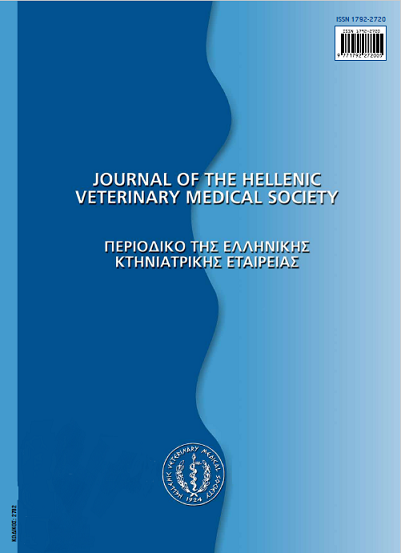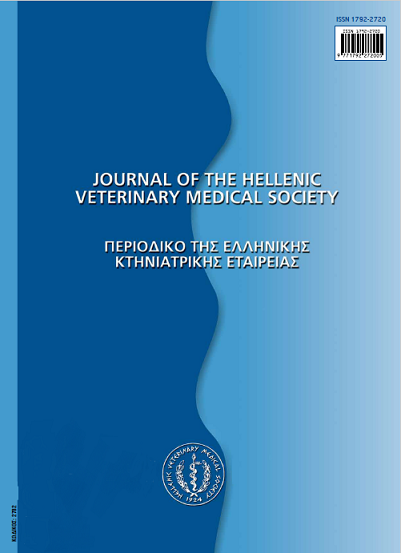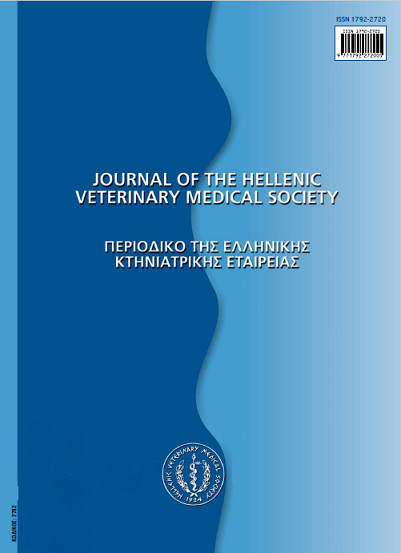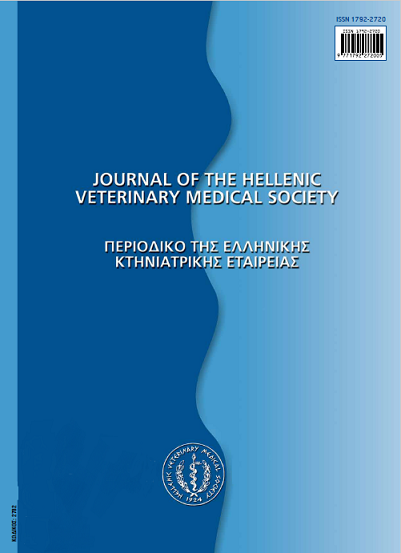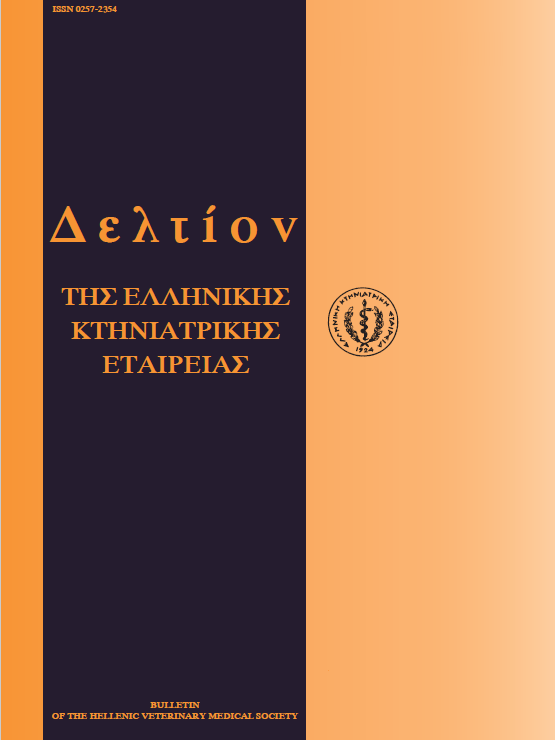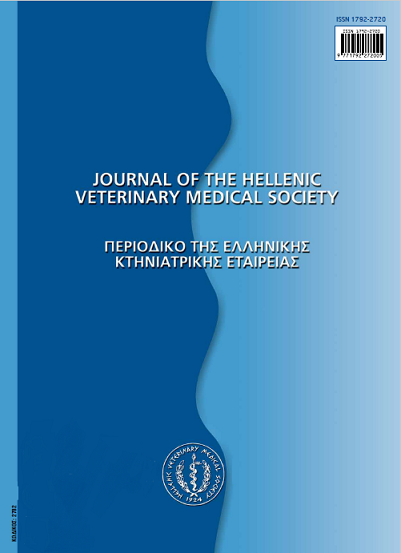Primary portal vein hypoplasia with portal hypertension in a young dog
Abstract
A 5-month old Caucasian dog was presented with a 20-day history of abdominal distention along with inappetance, depression and vomiting of 24-hour duration. Physical examination findings included depression, ascites, mild inspiratory dyspnea and dehydration. Clinicopathological evaluation revealed hyperammonemia, hypoalbuminemia, hyperbilirubinemia, hypoglycemia and hyponatremia. Μicrohepatia and free abdominal fluid was detected with abdominal ultrasonography. During exploratory laparotomy, multiple acquired portosystemic collateral vessels were found, indicative of portal hypertension, along with a small liver of normal color and texture. Liver histopathology included features consistent with liver hypoperfusion. These findings supported the diagnosis of primary portal vein hypoplasia with portal hypertension. The animal recovered uneventfully postoperatively and was discharged with diuretics, hepatoprotectants and a low-protein diet and remains healthy two years after diagnosis. This case underscores that a favorable prognosis may be anticipated in cases of primary portal vein hypoplasia with portal hypertension, thus, justifying the long-term conservative management instead of considering euthanasia.
Article Details
- Come citare
-
KASABALIS (Δ. ΚΑΣΑΜΠΑΛΗΣ) D., ALATZAS (Δ. ΑΛΑΤΖΑΣ) D., ALATZA (Δ. ΑΛΑΤΖΑ) D., PETANIDES (Θ. ΠΕΤΑΝΙΔΗΣ) T. A., ALATZAS (Γ. ΑΛΑΤΖΑΣ) G., PAPAZOGLOU (Λ. ΠΑΠΑΖΟΓΛΟΥ) L. G., HARLEY, R., & MYLONAKIS (Μ.Ε. ΜΥΛΩΝΑΚΗΣ) M. E. (2017). Primary portal vein hypoplasia with portal hypertension in a young dog. Journal of the Hellenic Veterinary Medical Society, 65(4), 257–264. https://doi.org/10.12681/jhvms.15574
- Fascicolo
- V. 65 N. 4 (2014)
- Sezione
- Research Articles
Authors who publish with this journal agree to the following terms:
· Authors retain copyright and grant the journal right of first publication with the work simultaneously licensed under a Creative Commons Attribution Non-Commercial License that allows others to share the work with an acknowledgement of the work's authorship and initial publication in this journal.
· Authors are able to enter into separate, additional contractual arrangements for the non-exclusive distribution of the journal's published version of the work (e.g. post it to an institutional repository or publish it in a book), with an acknowledgement of its initial publication in this journal.
· Authors are permitted and encouraged to post their work online (preferably in institutional repositories or on their website) prior to and during the submission process, as it can lead to productive exchanges, as well as earlier and greater citation of published work.

